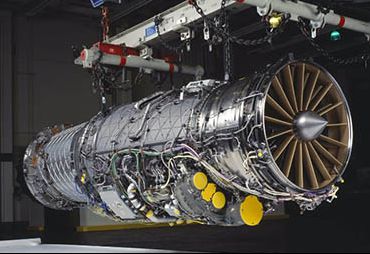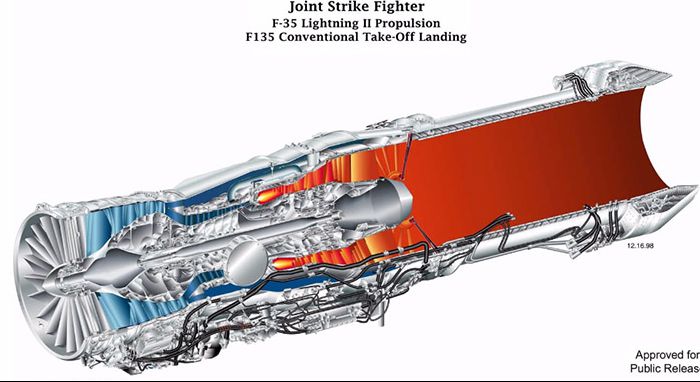The 23 June last year, the pilot of an Air Force F-35A assigned to the 58 ° Fighter Squadron at the Eglin air base in Florida, was forced to stop taking "safely aborted the takeoff" (ie in safe way) and to abandon the aircraft due to a fire that was now spreading on the fighter.
The pilot remained unharmed, but the incident involved the grounding of the entire F-35 fleet for a short period, the cancellation of the F-35B presentation of the Marines at the Farnborough Airshow, in England and a series of new tests on the propulsion system.
The cause of the fire that enveloped the F-35A, 10-5015 queue number, was confirmed by the Air Education and Training Command.
The investigation confirmed the suspicions. The cause of the fire was a problem in the third stage of the engine module. A condition of excessive friction (“hard rub”) would have occurred between the engine turbine blades and the surrounding grille. The excessive overheating then shattered part of the rotor section located in the third stage of the Pratt & Whitney F135 propulsion system module.
The crazed splinters (timing must be considered, the problem occurred within microseconds) were sucked into the entire propulsion line, damaging the internal fuel tank and hydraulics. The debris from the shattered rotor then pierced the top of the aircraft's fuselage. The fire developed due to the loss of fuel and hydraulic oil. The flames engulfed two thirds of the aircraft.

The F-35A cell, which cost just over 2013 million dollars in the 100, reported damage for 50 million dollars.
As confirmed by Lockheed, the engine problem would not be systemic.
In the 2016 budget of the National Defense Authorization Act proposed by the Chamber, the Pentagon is required to review the program in the specific section reserved for the driving force.
GAO: that engine is not reliable
"The reliability of the Pratt and Whitney engines is very poor. There may be further delays ". The report of the Government Accountability Office, of 28 last April, is merciless.
According to the GAO, the "percentage of reliability of the propulsion system is less than half of what is foreseen in the timeline of the Joint Strike Fighter program".
They continue from the GAO. "The technical problems are obvious, the road ahead to reach the objectives of the program is still long. The problems, of different nature, which have put the fleet on the ground on more than one occasion, have led to delays and obvious concerns about the inevitable increase in the cost of production ".
According to the GAO, the F-35 has an average number of maintenance failures / accidents that is much higher than the one that should be found for the average flight hours completed.
The GAO provides flight data. "The F-35A only flew the 21% of scheduled flight hours, while the F-35B completed the 52% of flight hours."
Pratt & Whitney's defense was not long in coming: “The data is absolutely inaccurate, we have updated the engines that meet the reliability parameters of the United States government. We don't understand how it can be said that our engines are unreliable ”.
They do not think so from the GAO who replied to the P&W note: "Achieving reliability will require more time and more resources than originally planned".

The next spending chapters reserved precisely for the propulsion system will sanction the success or failure of the F-35. Analyzing the Pratt & Whitney data, some discrepancies emerge with those of the GAO, but only because the additional tests were carried out on the ground.
The improvements made - they add from the company - have demonstrated an 147% reliability rate while the vertical landing variant reaches 119%. But they are still tests on the ground and not in flight.
45% of the engine is made by outside firms not attributable to Pratt & Whitney.
There is no spare engine for the F-35, but between 15 / 20 years new propulsion systems will be available that will improve the performance of the fifth-generation fighter.
Future updates (not to be confused with the development roadmap of Lockheed Martin to achieve full operational capacity) will be borne by the individual nations that can decide whether or not to keep the fighter in step with global challenges (the examples are wasted on numerous platforms that have not reached their full development due to lack of funds or have become obsolete online).
According to rumors, each new engine will cost around 15 million dollars.
Franco Iacch


(photo: USAF / Pratt & Withney / USMC)












